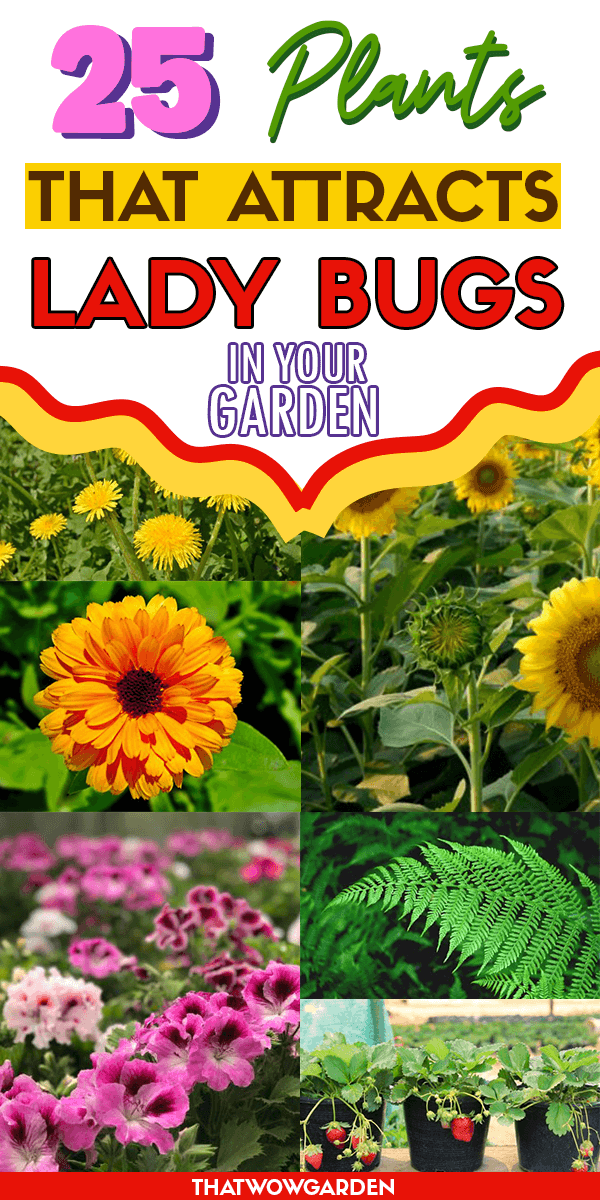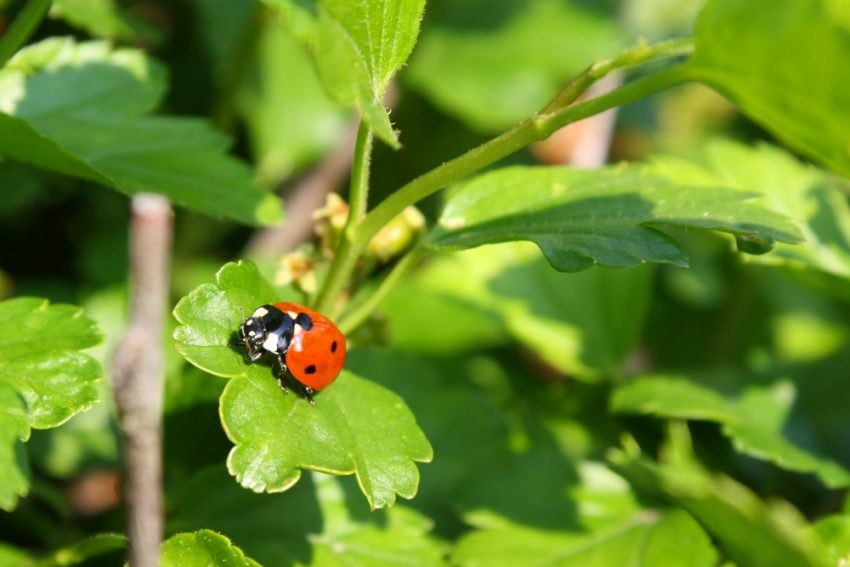I am quite an active gardener and like all other gardeners, ladybugs are my best friends. Ladybugs can eat the dreaded aphids and other virus transmitting pests. An adult ladybird can eat hundreds of pests in a day and is a natural pest controller. But seemingly, it’s not that easy to invite ladybugs to the garden.
You might know that they are fond of vibrant, colorful, and fragrant flowers. But do you know that ladybugs like to go for a pest-killing spree on some non-flowering plants too?
Indeed, these bugs are quite choosy. If you are struggling to find a way to invite these beneficial guests to your yard, you should plant some of the following plants that typically attract ladybugs. The list contains both flowering and non-flowering so you can have some plants that attract ladybugs on either side of the garden.
Go through the complete list to find the plants that are easy to grow in your yard and suit your soil.
25 Plants that Attract Ladybugs
1. Dandelion (Taraxacum Officinalis)
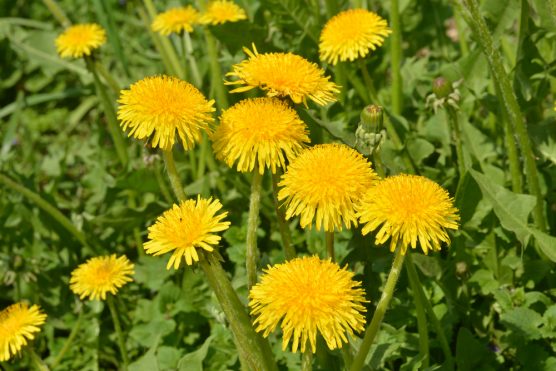
Popularly known as lions tooth, dandelions have been used as an inspiration for many poetries because of the positivity they attract. Apart from their healing properties, dandelions also attract a gardener’s favorite insects- the ladybugs. You can also use dandelion’s leaves to create decoctions and infusions.
2. Tormentil (Potentilla recta)
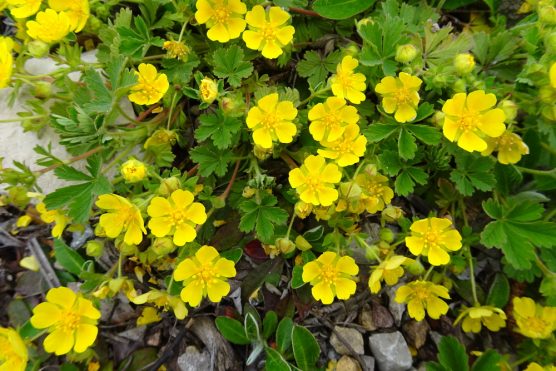
A popular plant you’ll find the mow lawns, tormentil strongly attracts ladybugs. The plant is quite easy to grow outdoors and mostly requires just fresh air. It blooms and flourishes during warmer months. If you own grazing lands, you can grow this one spontaneously.
3. Geranium (Pelargonium sp.)
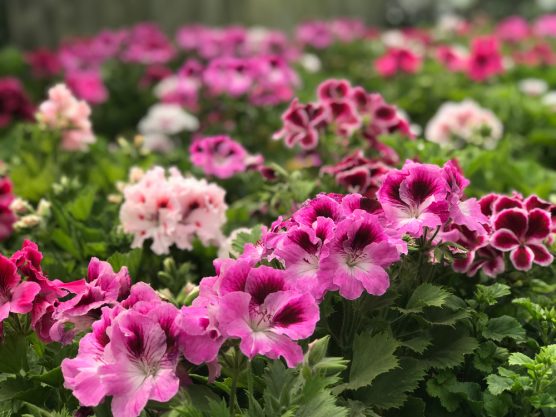
The vibrant and blossoming geranium plants are popular garden flowers. They add a lot of color to your terrace and indoor gardens which will not only attract a lot of positivity but ladybugs too.
They are low maintenance plants that require just a patch of brown soil to grow. They also attract other friendly insects like moths and beetles while repelling mosquitoes away from your home.
4. Garlic (Allium sativum)
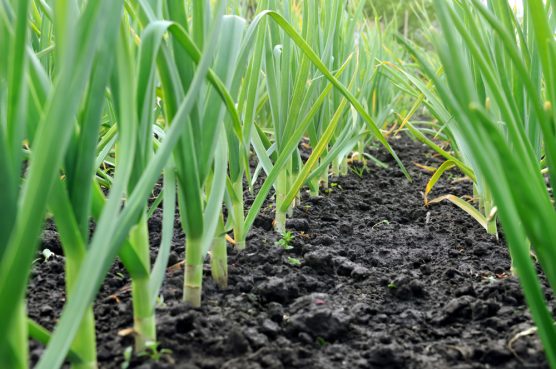
A part of almost every dish and sauce in your home, garlic needs no introduction. But a lot of us don’t know that garlic plants also attract garden-friendly ladybugs. Garlic is easy to cultivate although it grows underground.
You need to choose the right season to plant garlic. When garlic is ripe, it produces purple flowers that attract a host of pollinators towards them.
5. Dilli (Anethum graveolens)
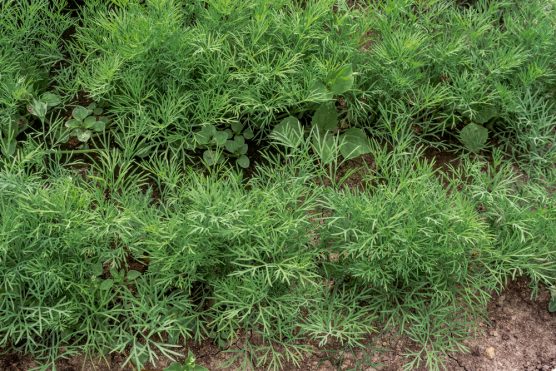
Dilli is a plant you might not know but would never fail to recognize once you smell it. Its strong and pleasant aroma makes it a favorite for orchids in the Nordic countries.
You can also use the plant’s small leaves to make your salads and sauces more flavorful and exotic. It will be an ideal ladybug-attracting plant especially if you have cucumber in your orchid since Dilli intercrops with cucumber.
6. Parsley (Petroselinum crispum)
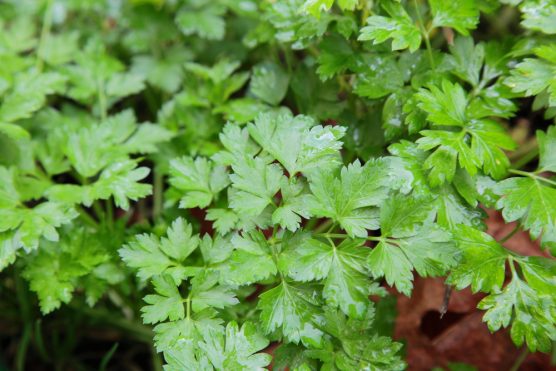
Another popular ingredient you’ll find on your kitchen shelf and food ingredients, parsley also attracts pollinators. Consider planting parsley plants in your garden to have fresh parsley at your disposal and to attract ladybugs.
Apart from its culinary properties, parsley also is a decorative plant. Moreover, physiotherapists have also been using it these days. Having some fresh parsley to garnish your pizza and pasta is never a bad thing either!
7. Mulberry (Morus L.)
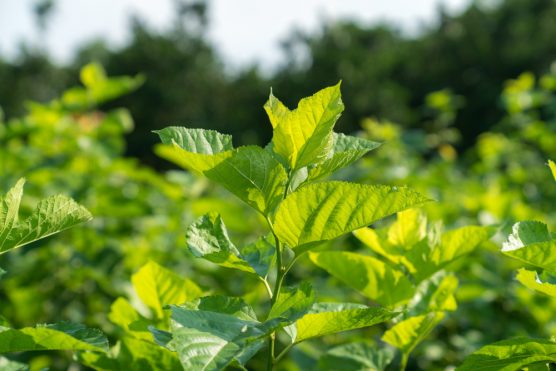
As suggested by the name, mulberry is a cousin shrub of blackberries. The fruits of this plant are quite similar to the blackberries. You might have heard the name in your elementary books.
Yes, this is the same plant that has been used to rear silkworms for centuries. Its fruits are also delicious as well as quite nutritious. Another reason why you must have this one in your garden is that it attracts ladybugs too.
8. Mint (Mentha Officinalis)
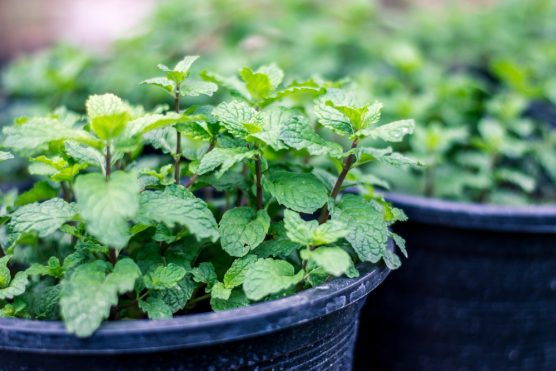
The mint plant can let you get the best out of your mornings if you infuse it in a drink. Then it makes super tasty sauces and mixes while it can add a layer of freshness as a garnish.
Mint plant also has an exotic aroma that can freshen your senses. The hardy plant does need proper care but will invite friendly ladybugs to your yard too.
9. Bluebottle (Centaurea cyanus)
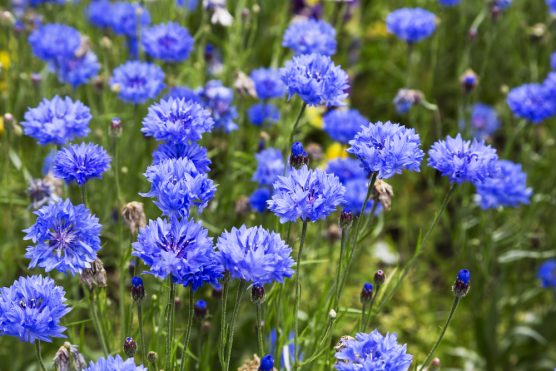
You can identify the wonderful blue flowers of the blue bottle by just a gaze from afar. That’s what the ladybugs do too and that’s why they come flying towards it now and then. Its pollens also prove to be irresistible for ladybugs.
You can add these elegant and vibrant flowers to a flowerbed and outline it with violet flowers to make it a treat to watch.
10. Calendula (Calendula officinalis)
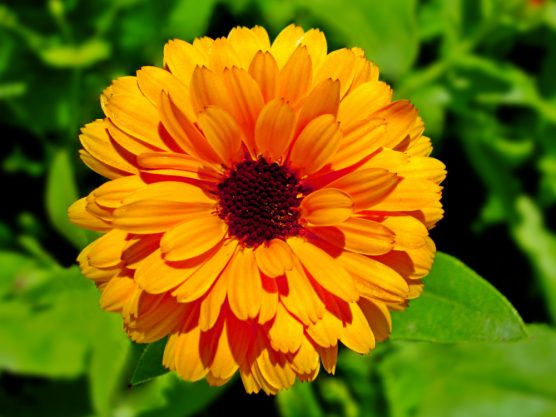
Belonging from the Asteraceae family, Calendula has rare soothing and lenitive properties. It’s easy to pot and you can have it near your windows as well as at your balconies. Its summer color attracts a lot of ladybugs while it will also act as a mosquito repellent guarding your home.
11. Sweet Alyssum (Lobularia maritima)
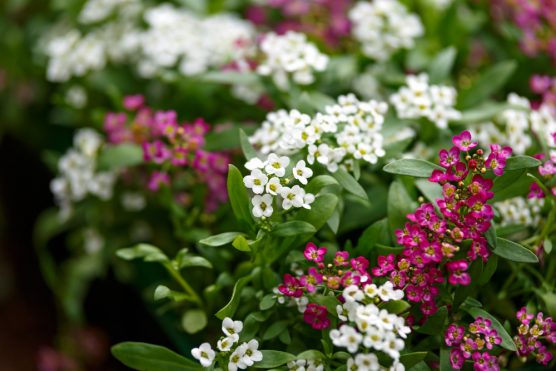
White blooming flowers of sweet alyssum grow in clusters and make for wonderful flowerbeds. They have a mild fragrance that is strong enough to attract ladybugs.
These plants typically grow well in moderate temperatures of around 65 F. You don’t want to expose these to extremely high temperatures. Hence you may need to re-pot them after summers.
12. Coriander (Cilantro)
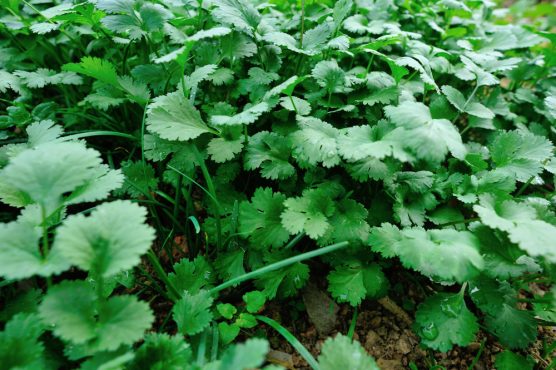
Cilantro is popularly known by the name coriander and it’s hard to imagine anybody not knowing about it. The ultimate garnishing plant, coriander herb is also used aggressively in South Indian dishes.
It has a strong, exotic fragrance which makes it a host for ladybugs.
13. Butterfly Weed (Asclepias tuberosa)
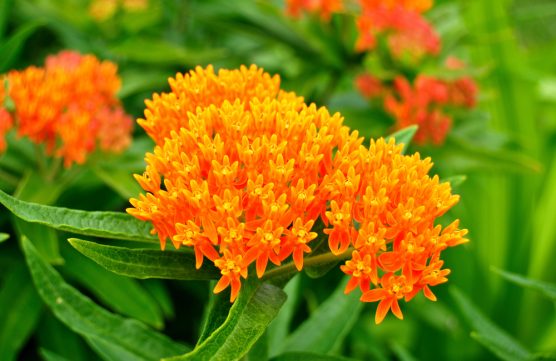
As the name suggests, this orange colored plant strongly attracts butterflies and ladybugs owing to its copious amounts of nectar and dazzling glow and make your garden a busy place. The milkweed native is quite common in North America.
14. Fennel
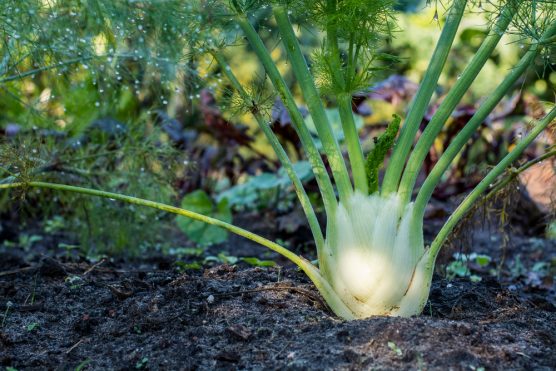
A flowering plant from the carrot family, Fennel is a perennial and hardy herb that produces gorgeous yellow flowers. A few people suspect that funnel can retard the growth of nearby plants but that’s just a rumor people have.
It is a common part along with parts of the Mediterranean sea. For the best maintenance, you should provide a wide space for the Fennel plant in your garden.
15. Feverfew (Tanacetum parthenium)
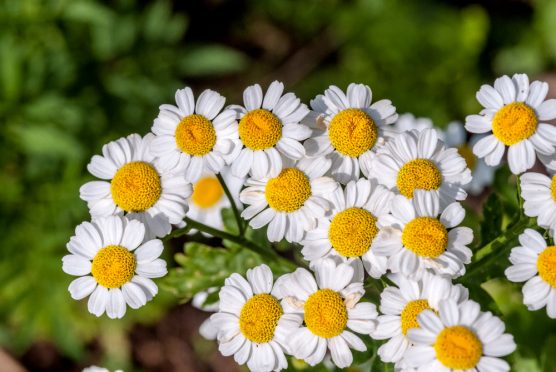
As the name suggests, Feverfew can help you fight fevers as well as migraines. The medicinal plant with yellow and white flowers is also adept at fighting arthritic pain. But one of its standout properties is how it attracts ladybugs.
It is in line with the ladybug’s nature of getting attracted to beautiful blooms.
Feverfew is also an excellent companion plant. So you can plant it with freedom in your sunny garden in which it thrives.
16. Yarrow
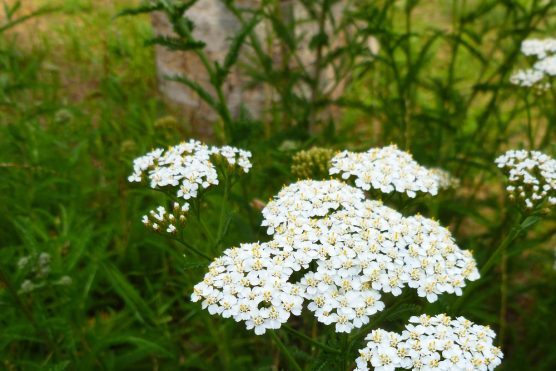
Another medicinal plant, yarrow is an essential part of any apothecary. Its part above the ground has proven medicinal abilities while it also lends a dash of vibrance to your garden.
It has feathery foliage with a variety of colorful blooms ranging from white to pink. It can quickly change color to look like a masterpiece in the shiny sunlight and can reflect the beauty of sunsets. On top of that, yarrow is also a go-to resting place for ladybugs which makes it a must-have plant in your garden.
17. Queen Anne’s Lace (Daucus Carota)
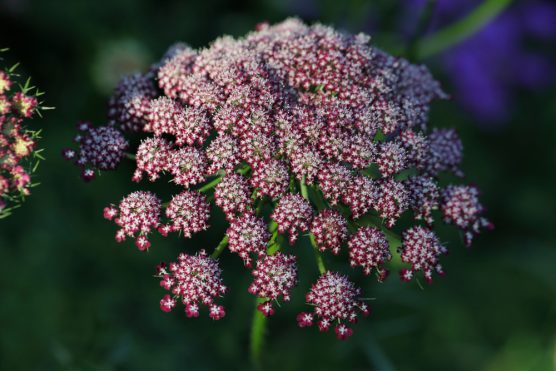
Also known as wild carrot and bird’s nest, this white, this white flowering plant is as graceful as it gets. The plant is drought tolerant which is a reason why it’s popular in temperate regions of southwest Asia and Europe.
The white queen like flowers of this flowering plant can enhance the sheen of any garden. And of course, ladybugs love these and so do we. After all how adorable ladybugs do look sitting on white flowers!
18. Wild Celery (Angelica)
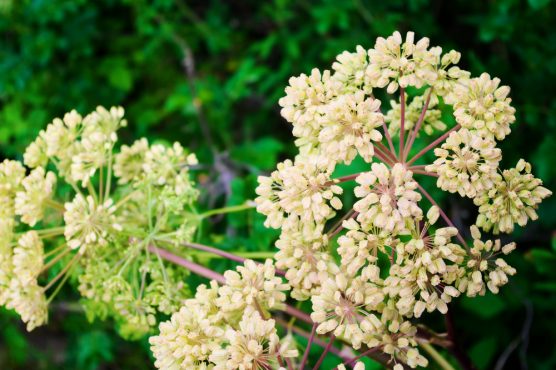
The tall biennial and perennial herbs of angelica are often used as medicinal herbs. Other times, winemakers use these to enhance flavors of gin and some sweet wines. These sweet herbs can withstand high temperatures and are native to subarctic areas of the Northern Hemisphere.
These plants provide excellent shelters for ladybugs to lay their eggs and hence there’s more than one reason to have these in your garden.
19. Asparagus
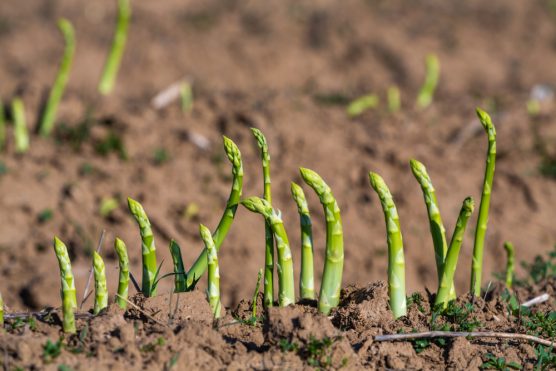
Also known as sparrow grass, Asparagus are perennial flowering plants once classified in the lily family. You can use asparagus’ young shoots as spring vegetables. Asparagus beetle can destroy the crops and ladybugs typically come to the rescue by beetle larvae.
You should also plant ferns at the border of your asparagus plants. This solves two issues in one by deterring the beetle and encouraging ladybugs to enter the site.
20. Cacti
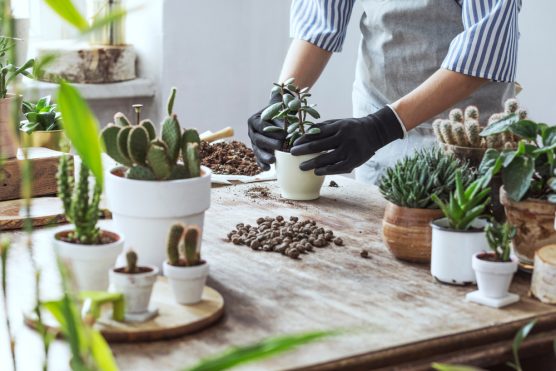
Cacti is an umbrella term for most succulents which are typically found in dry climes. You can also plant the succulents in your garden if you want ladybugs to visit your space. Succulents are excellent feeding grounds for ladybugs and provide a warm welcome. Succulents also attract mealy bugs, red spider mites apart from ladybugs which are a revelation as insects.
21. Ferns
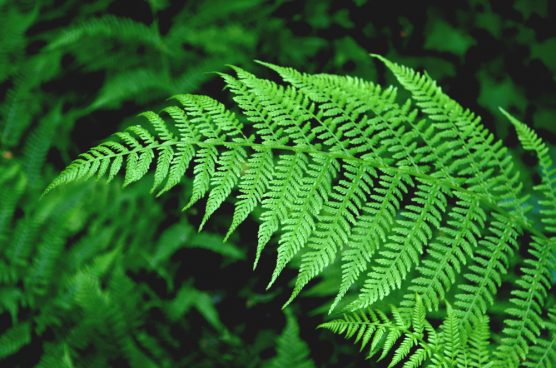
Ferns provide a great location for ladybugs to have their meals. They attract mealy bugs, brown scale, red spider mites, and whitefly which the ladybugs love to thrive upon.
They provide an abundance of food for ladybugs and hence keep these pests away from your garden too. Having a bed of ferns is an excellent way to attract ladybugs and keep your garden pest-free.
22. Mustard Plant
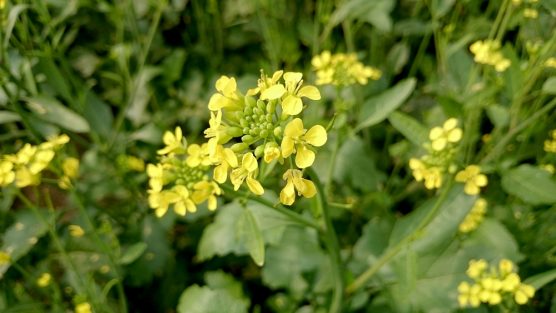
Yellow mustard plants make the yard look vibrant and wholesome. They grow rapidly and you can create freshly prepared mustard if you have these at your yard
Mustard also attracts ladybugs which in turn attack mustard aphids. Ladybugs attract to mustard plants because of their glowing color and later kill moths and other insects who drop their larvae on the plant.
23. Statice (Sea Lavender)
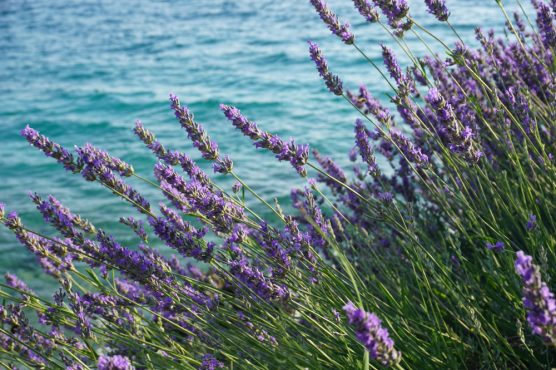
The strong and exotic colors of sea lavenders like purple, pink and yellow attract the red and black colored bugs frequently. These plants come in about 120 various varieties. Sea lavenders attract a lot of food for ladybugs like aphids and red spider mites. That’s why ladybugs love to visit this place every afternoon.
24. Strawberries
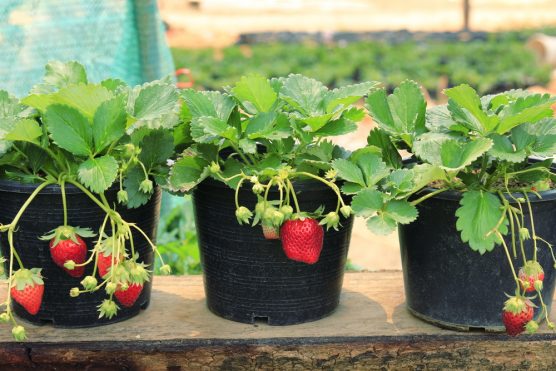
You can naturally attract ladybugs to any elegant or attractive color like that of strawberries. The soothing red and pink of strawberries attract several bugs like weevils and strawberry thrips which act as food for the ladybugs.
Strawberries look better in a strawberry planter than on the floor. You can choose from the various stylish strawberry planters available in the market to plant these ladybug-attracting elements.
25. Sunflower (Helianthus)
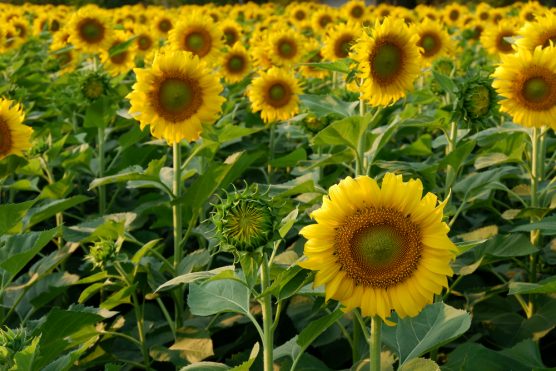
Helianthus is an exotic genus of over 70 perennial and flowering plants but it’s safe to say the sunflower is the most common of this household. These plants are popular in Central America and North America and the large and vivid colors of sunflowers attract a lot of ladybugs.

